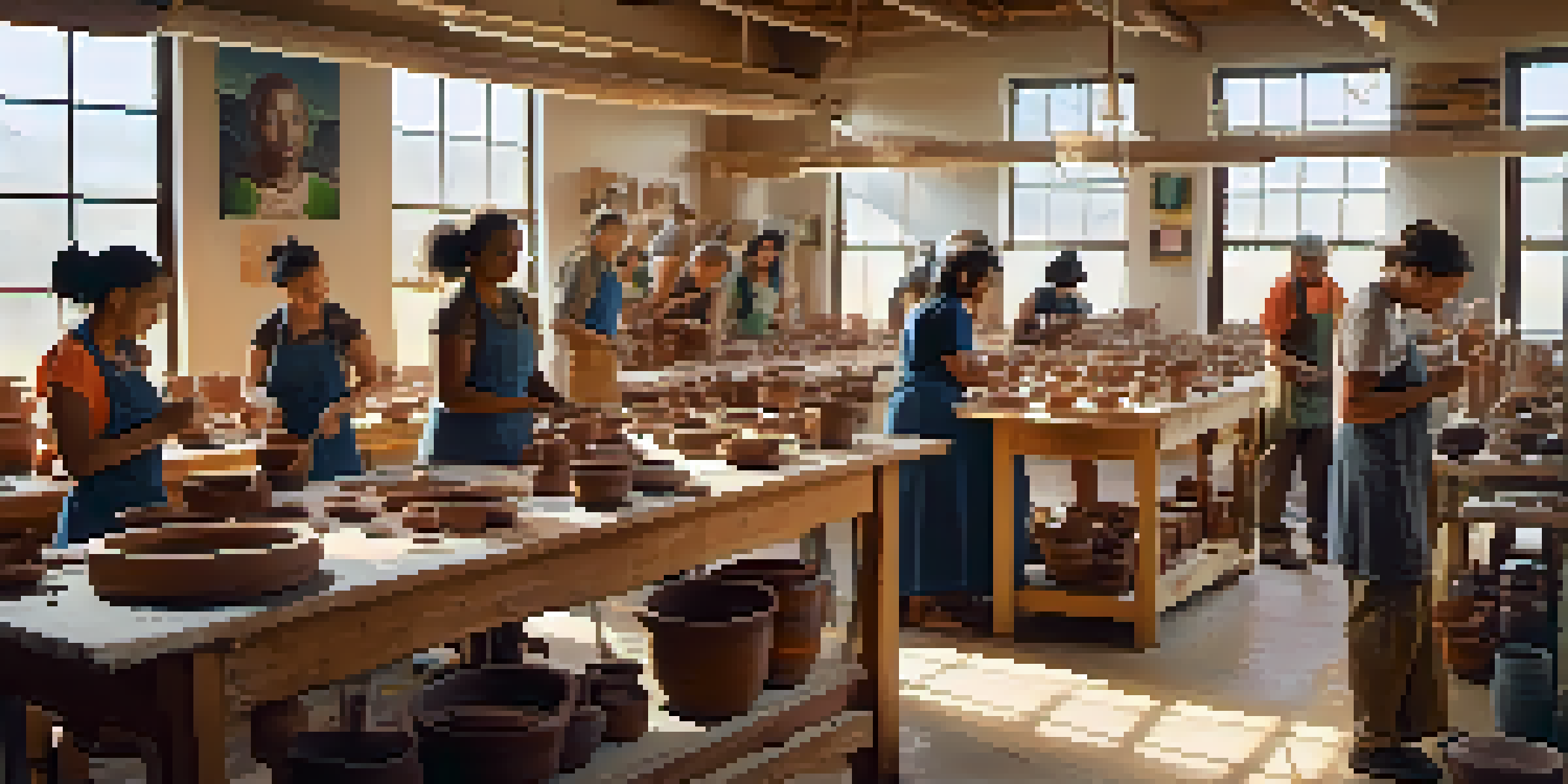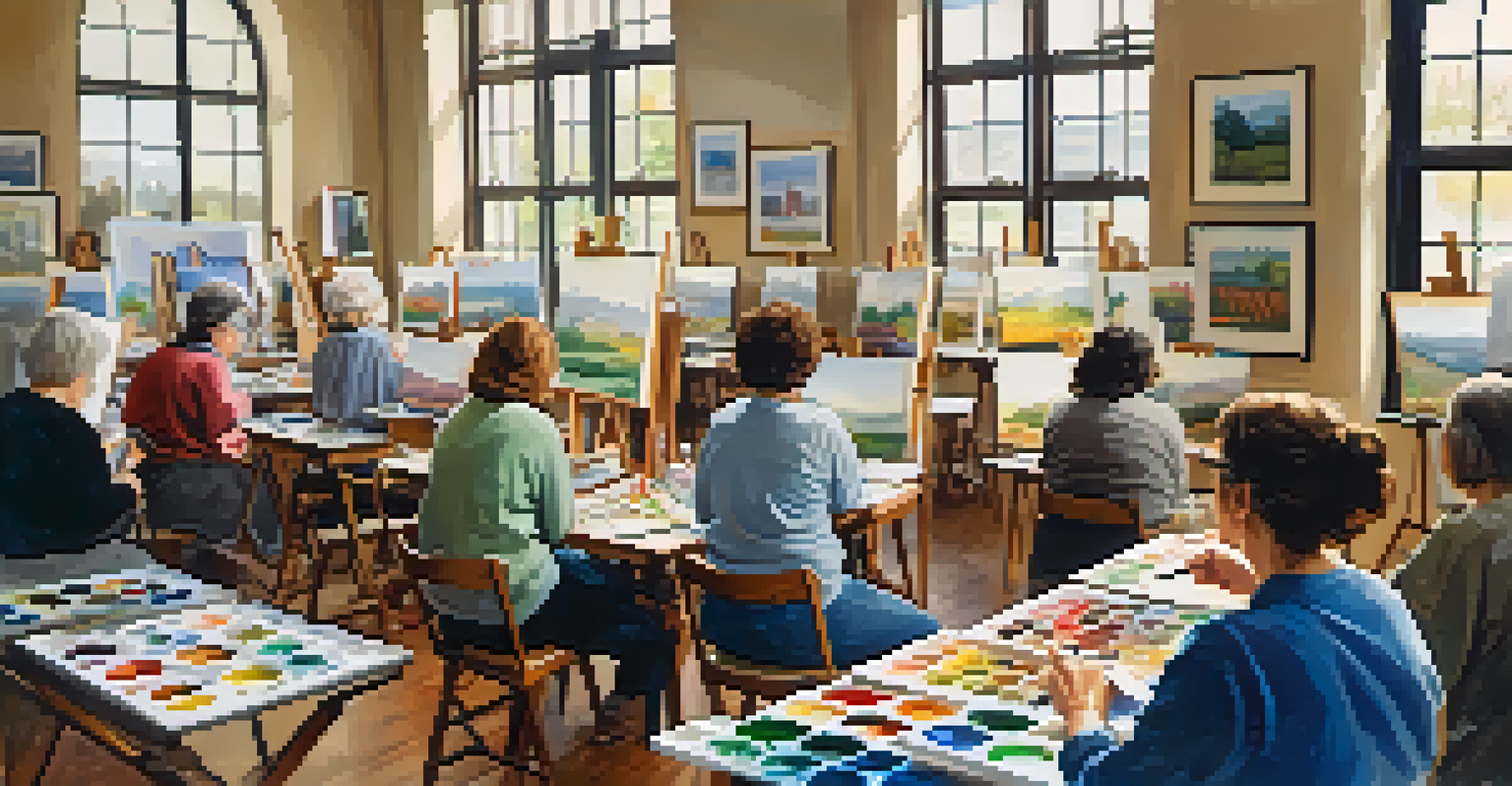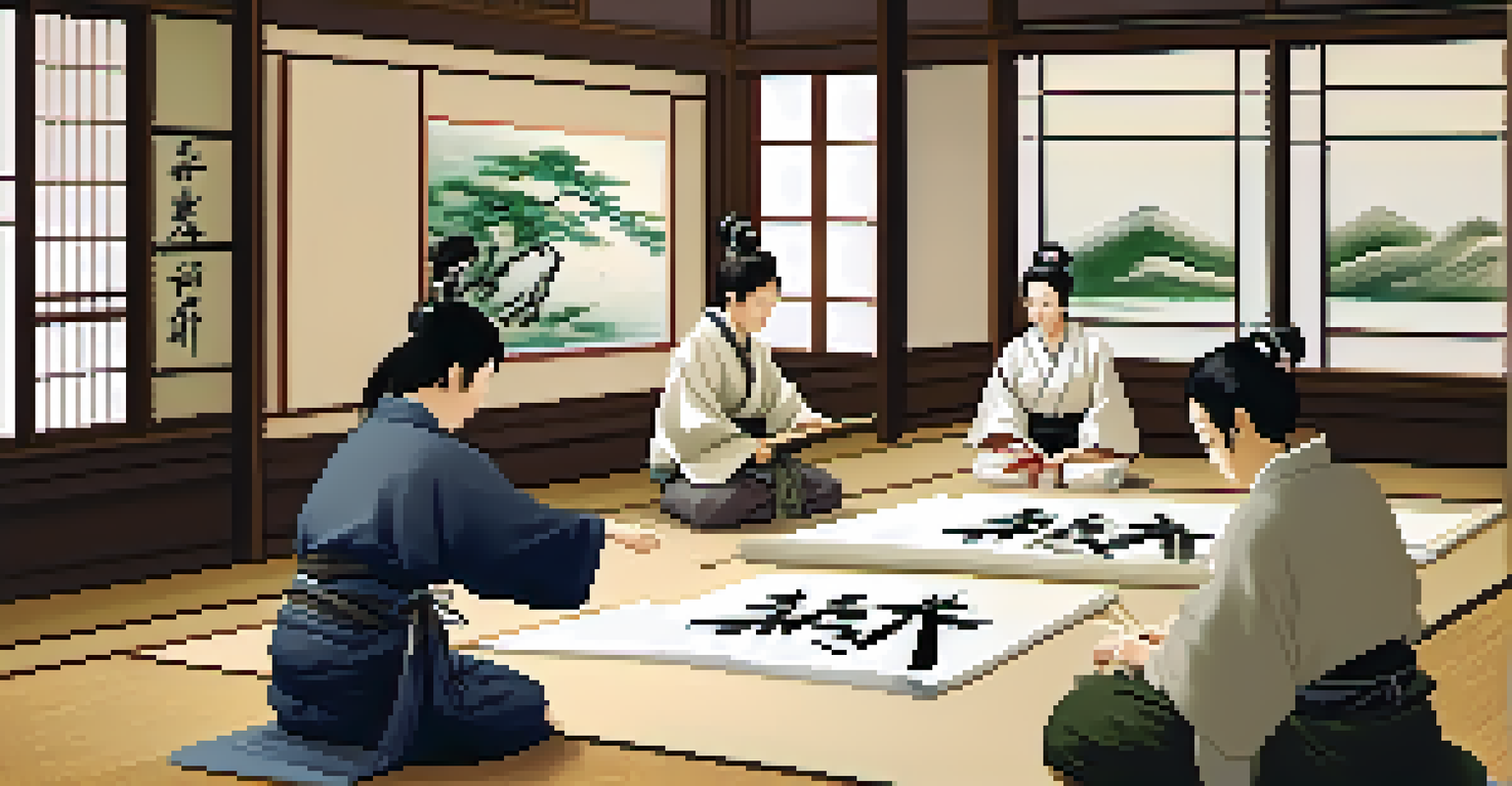Art and Craft Workshops: Hands-on Cultural Experiences

The Importance of Hands-On Learning in Art and Craft
Hands-on learning is a dynamic approach that encourages creativity and engagement. In art and craft workshops, participants don’t just observe; they actively create, making the experience memorable. This tactile involvement helps reinforce skills and concepts, making them easier to remember and apply in the future.
Art is not what you see, but what you make others see.
Moreover, engaging in creative activities can boost self-confidence. When individuals see their ideas come to life, it fosters a sense of accomplishment. This confidence often spills over into other areas of life, encouraging a more proactive and innovative approach to challenges.
Finally, hands-on workshops promote a deeper understanding of cultural practices. By physically engaging with art forms from different cultures, participants gain insights that go beyond mere observation, enriching their appreciation of diverse artistic traditions.
Exploring Diverse Art Forms in Workshops
Art and craft workshops can span a vast array of mediums, from pottery and painting to textile arts and woodworking. Each form offers unique techniques and cultural significance that participants can explore. For instance, a pottery workshop not only teaches the basics of shaping clay but also unveils the history behind this ancient art.

Participating in different workshops allows individuals to discover their artistic preferences and strengths. Someone might find a passion for watercolor painting while another may thrive in the intricate world of embroidery. This diversity ensures that workshops cater to varied interests and skill levels, making art accessible to everyone.
Hands-On Learning Boosts Creativity
Engaging in hands-on workshops enhances creativity and reinforces skills through active participation.
Furthermore, these workshops often invite local artists to share their expertise. This not only enriches the learning experience but also provides a platform for artists to showcase their work and connect with the community. Such interactions can inspire participants and ignite a lifelong love for art.
Cultural Exchange Through Art and Craft
Art and craft workshops serve as bridges between cultures, allowing participants to engage with traditions from around the world. For example, a Japanese calligraphy workshop can provide insights into not just the technique, but also the philosophy behind it. This cultural exchange fosters understanding and appreciation among diverse groups.
Creativity takes courage.
Moreover, these workshops often encourage participants to share their own cultural backgrounds. This sharing of stories and experiences creates a rich tapestry of knowledge that enhances the overall experience. It’s not just about learning a skill; it’s about creating a community that celebrates diversity.
Such exchanges can lead to collaborative projects that merge different artistic styles. When individuals from different backgrounds work together, they create unique pieces that reflect their shared experiences. This collaboration is a powerful reminder of the beauty found in diversity.
Benefits of Participating in Art and Craft Workshops
Participating in art and craft workshops offers numerous benefits, such as reducing stress and enhancing mental well-being. Engaging in creative activities allows individuals to express themselves and channel their emotions productively. This therapeutic aspect can be especially beneficial in today’s fast-paced world.
Additionally, workshops provide a fun and social environment. Participants often meet like-minded individuals who share a passion for creativity. These connections can lead to friendships and collaborations that extend beyond the workshop, fostering a supportive community of artists.
Cultural Exchange Enriches Experience
Art and craft workshops promote cultural exchange, allowing participants to appreciate diverse artistic traditions.
Lastly, the skills acquired in these workshops can be applied to everyday life. For instance, learning to paint can enhance one’s observational skills and attention to detail. These transferable skills can be invaluable in both personal and professional settings.
Finding the Right Workshop for You
With so many options available, finding the right art and craft workshop can be overwhelming. It's important to consider your interests, skill level, and the type of experience you want. Whether you're looking for a relaxing afternoon of painting or a challenging pottery class, there’s something for everyone.
Researching local studios and community centers can yield great results. Many places offer a variety of workshops throughout the year, allowing you to try out different mediums. Additionally, reading reviews and testimonials can give you insight into what to expect and help you make an informed choice.
Don’t hesitate to ask questions before committing. Reach out to instructors to learn about their teaching styles and workshop formats. This can ensure that you choose a workshop that aligns with your learning preferences and artistic goals.
Overcoming Common Hesitations to Join Workshops
Many people hesitate to join art and craft workshops due to fears of inadequacy or lack of experience. It's crucial to remember that these workshops are designed for learners of all levels. Everyone starts somewhere, and the supportive environment encourages growth and experimentation without judgment.
Another common concern is time commitment. Workshops can vary in length, from a few hours to several weeks. Consider your schedule and look for shorter, one-off sessions if you're unsure about a longer commitment. This way, you can dip your toes in without a significant time investment.
Workshops Foster Community and Growth
Participating in workshops creates a supportive community while providing opportunities for personal and artistic development.
Lastly, financial concerns can also be a barrier. However, many workshops offer sliding scale fees or community-supported options. Exploring local non-profits and community centers may uncover affordable opportunities that make participation accessible for everyone.
Creating Lasting Memories Through Art and Craft
Art and craft workshops are not just about skills; they create lasting memories. Each piece created serves as a tangible reminder of the experience, whether it's a handmade mug or a painted canvas. These creations often hold sentimental value, reminding participants of their journey and the connections made.
Moreover, sharing these experiences with friends or family can deepen relationships. Attending a workshop together can spark conversations and create shared stories that last a lifetime. It’s a wonderful way to bond while exploring creativity together.

Finally, many participants find that these workshops ignite a passion for continued artistic exploration. The skills and confidence gained can inspire individuals to pursue their creative interests further, whether through personal projects or additional classes. This ongoing journey adds layers of richness to the memories created in the workshop.